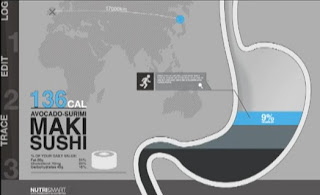RFID tags are already used to trace everything from poker chips to hotel towels, but what if these little pellets were embedded directly within your lunch, providing everything you'd ever wanna know about that ham sandwich you're about to beast? That's the idea behind NutriSmart -- a food tracking system that revolves around edible RFID tags. Developed by Hannes Harms, a design engineering student at the Royal College of Art in London, these little markers would allow consumers to trace the entire supply chain behind every item in their cupboard, while feeding valuable nutritional information to dieters or people with particularly dangerous food allergies. Kodak, as you may recall, came up with a similar idea a few years ago, though Harms' prototype extends beyond the realm of medical monitoring. Properly equipped refrigerators, for example, would be able to alert users whenever their stock's about to expire, simply by scanning the tags. The NutriSmart concept also calls for a smart plate, which Harms describes as an "invisible diet management system." Just put your meal on the plate and an embedded reader will analyze your grub, tell you how many miles it traveled before arriving at your kitchen and transmit all of its history and caloric data to your phone, via Bluetooth. No word yet on what would happen to these tags post-digestion, though our inner 13-year-olds are giggling at the possibilities. Video after the break.
NutriSmart from HannesRemote on Vimeo.










